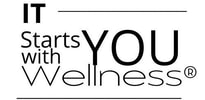2.1 (D) Exploring the Senses
Exploring The Senses:
There are five senses and they are:
1. Sight
2. Sound
3. Touch
4. Smell
5. Taste
The senses are an intricate part of the healing process, as they act as a direct link into the brain. Most people have a dominant sense, or one that affects them more than others. Do you know what your dominant sense is? And did you know that you could USE that dominant sense to help you in the healing process?
Let’s take a look at each of the senses, to show how each can affect the mind, body and soul. Then after, try to recognize what YOUR dominant sense is!
Explanation:
The senses can help get you enhance your well being. So, for me, my dominant sense is sound, but I can still use the other senses to create a positive atmosphere for myself. So, if I wanted to feel happy, I could go to the beach, where I can gaze upon a beautiful sunset, listening to the sound of the waves, while eating my favorite food, smelling the salty air, and feeling the gentle breeze against my skin.
Here I have touched upon every sense, positively, in one experience. It is hard to allow negativity when you are basically sending positive energy into the brain at the same time. Now think about how this can change if someone sat next to me and “broke my zen”, by playing loud, obnoxious music. Since my dominant sense is sound, my mind would focus directly on the sound first. This would kill the beautiful mood I set for myself, and may even create a negative mood for me. (I like the calm and relaxing, natural sounds.) Now, if my dominant sense was sight, I may be able to focus directly on the beautiful sunset, and “tune out” the obnoxious music, since my mind would clue in on the “sights” more than the “sounds”. So, then, it may not be so bad for me. Hopefully, you see where I am going with this.
We are all different, and I can’t say that enough. You need to understand what YOU feel inside. What makes YOU tick. This is the basis of your own healing process. By doing your own homework, and learning how YOU are affected by each of the senses, you can figure out which ones could be helpful, and which may actually be harmful. Think about it all, and write it in your journal.
There are five senses and they are:
1. Sight
2. Sound
3. Touch
4. Smell
5. Taste
The senses are an intricate part of the healing process, as they act as a direct link into the brain. Most people have a dominant sense, or one that affects them more than others. Do you know what your dominant sense is? And did you know that you could USE that dominant sense to help you in the healing process?
Let’s take a look at each of the senses, to show how each can affect the mind, body and soul. Then after, try to recognize what YOUR dominant sense is!
Explanation:
The senses can help get you enhance your well being. So, for me, my dominant sense is sound, but I can still use the other senses to create a positive atmosphere for myself. So, if I wanted to feel happy, I could go to the beach, where I can gaze upon a beautiful sunset, listening to the sound of the waves, while eating my favorite food, smelling the salty air, and feeling the gentle breeze against my skin.
Here I have touched upon every sense, positively, in one experience. It is hard to allow negativity when you are basically sending positive energy into the brain at the same time. Now think about how this can change if someone sat next to me and “broke my zen”, by playing loud, obnoxious music. Since my dominant sense is sound, my mind would focus directly on the sound first. This would kill the beautiful mood I set for myself, and may even create a negative mood for me. (I like the calm and relaxing, natural sounds.) Now, if my dominant sense was sight, I may be able to focus directly on the beautiful sunset, and “tune out” the obnoxious music, since my mind would clue in on the “sights” more than the “sounds”. So, then, it may not be so bad for me. Hopefully, you see where I am going with this.
We are all different, and I can’t say that enough. You need to understand what YOU feel inside. What makes YOU tick. This is the basis of your own healing process. By doing your own homework, and learning how YOU are affected by each of the senses, you can figure out which ones could be helpful, and which may actually be harmful. Think about it all, and write it in your journal.
